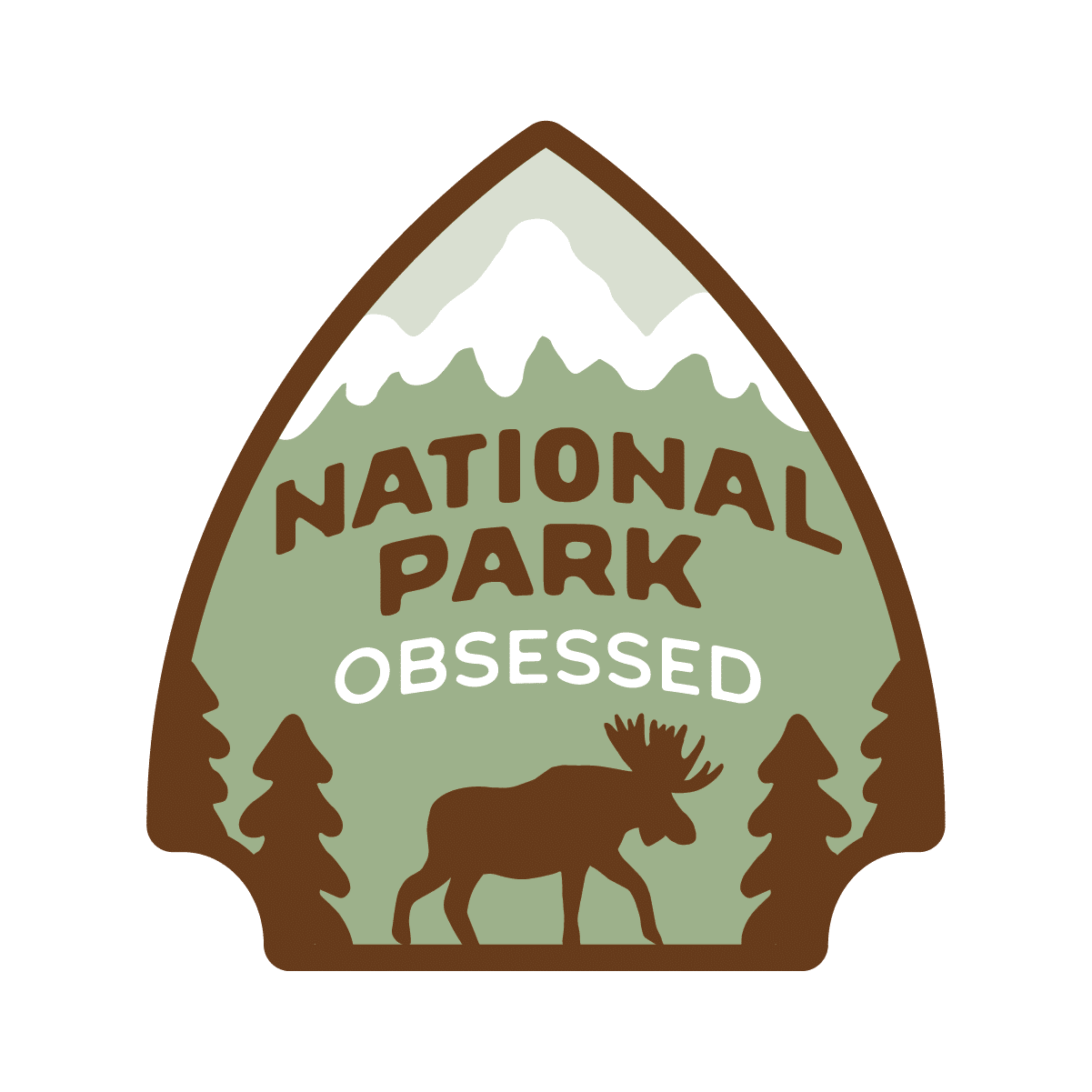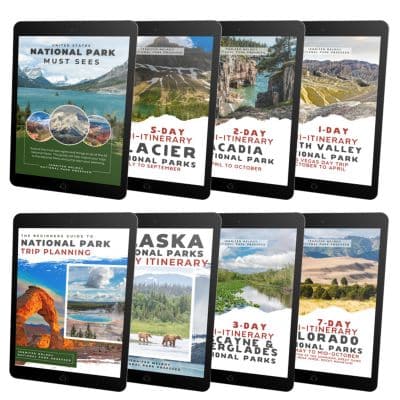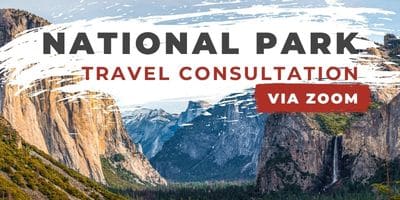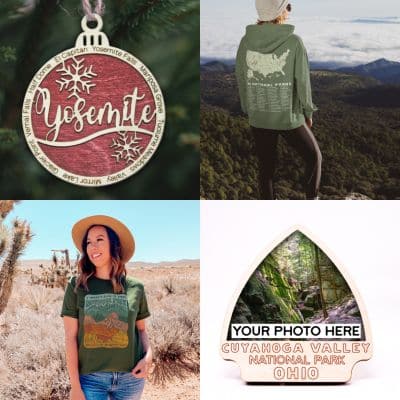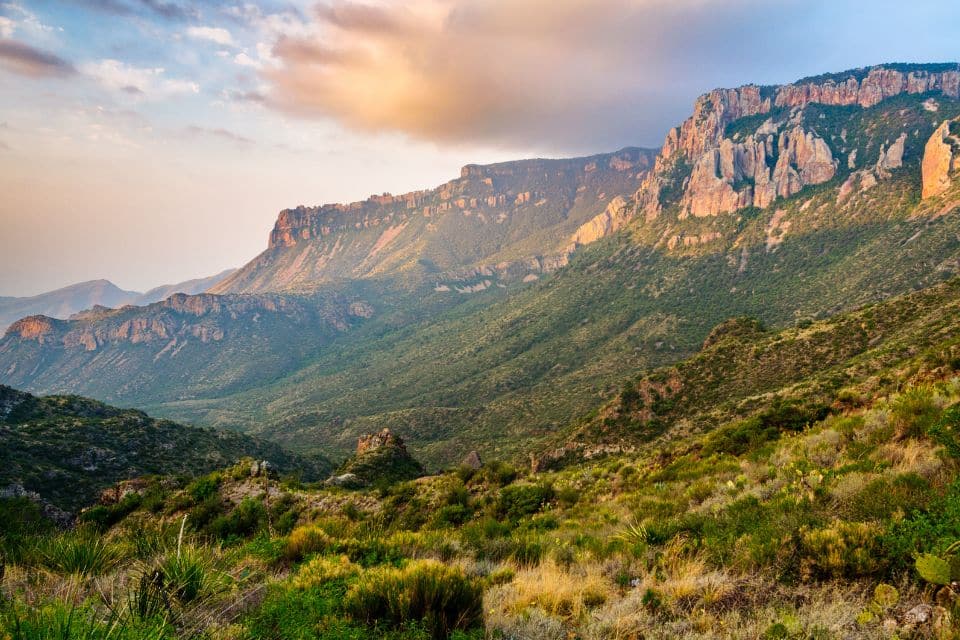
Is Big Bend National Park Safe? (2024 Update)
- Jennifer Melroy
- Last Modified January 20, 2024
- First Published on January 20, 2024
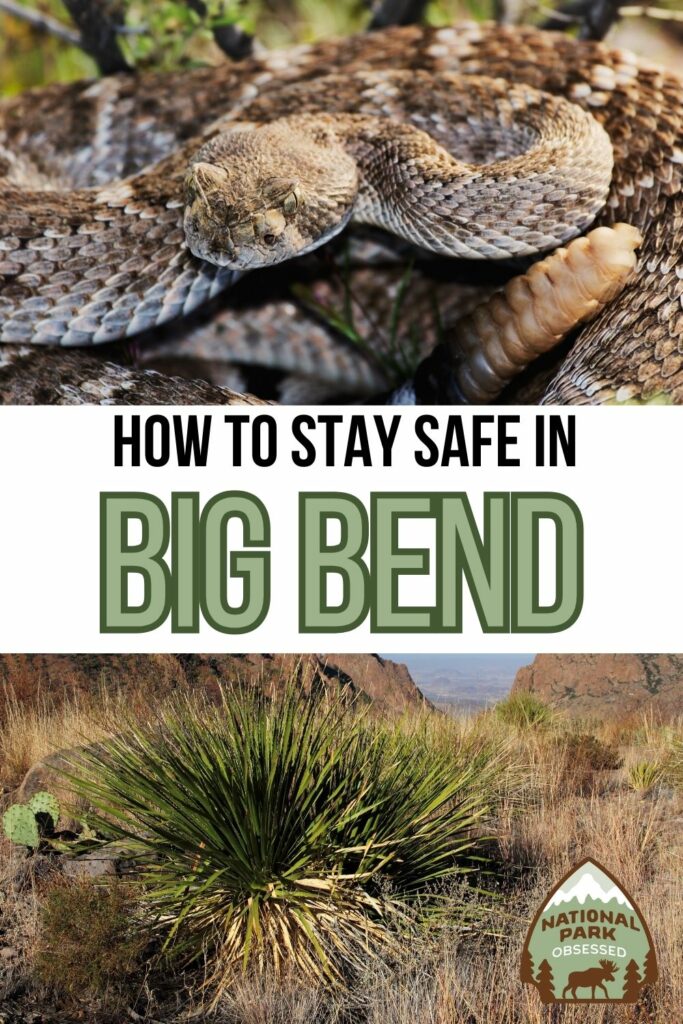
When planning a trip to the majestic landscapes of Big Bend National Park, a question often arises: “Is Big Bend National Park safe?” It’s a valid concern for any traveler venturing into this expansive natural wonder along the United States/Mexico border.
Like most National Parks, Big Bend has a range of different hazards that visitors need to be aware of and prepared for. Big Bend has numerous safety hazards that range from the desert heat to the park’s wildlife. It pays to be prepared.
The article will discuss all aspects of staying safe in Big Bend National Park, including:
- Big Bend Safety by the Numbers
- US/Mexico Border Safety
- Dangers in Big Bend National Park
- Boquillas Del Carmen Safety
Planning a Trip to Texas? Download your free Texas National Park Map HERE.
Table of Contents
This post may contain affiliate links, meaning if you book or buy something through one of these links, I may earn a small commission at no extra cost to you! Read the full disclosure policy here.
Jump RIght into Planning a Big Bend National Park Trip
New to National Park Trip Planning? Check out the Ultimate National Park Planning Bundle to help guide you through planning a trip to the National Parks.
- Best Things to Do: Soak in the Springs, Hike the Windows, Float the Rio Grande
- Best Time to Visit: Spring or Fall
- Entrance Fees:$35 per vehicle covered by the America the Beautiful National Park Pass.
- Passport Stamps: There are 6 Stamps. Get my National Park Passport.
- Closest Airports: El Paso International Airport (ELP) and Midland International Air and Space Port (MAF)- Use Skyscanner to get the best prices on your flights.
- How to Get There: You can take the Amtrak to nearby towns, but will will need to drive to the park.
- How to Get Around: You will need a vehicle to get around. Browse for deals on rental cars at RentalCars.com. Or rent an RV or campervan with RVshare or Outdoorsy.
- Best Places to Stay: Chisos Mountain Lodge, Paisano Village RV Park
- Best Campground: Chisos Basin Campground. For private campgrounds, check out Campspot.
- Big Bend Swag: Get some swag before your trip.
- Don’t forget travel insurance: I get my travel insurance through World Nomads.
Let someone else do the planning with our pre-planned National Park Itineraries for less than $6 a day.
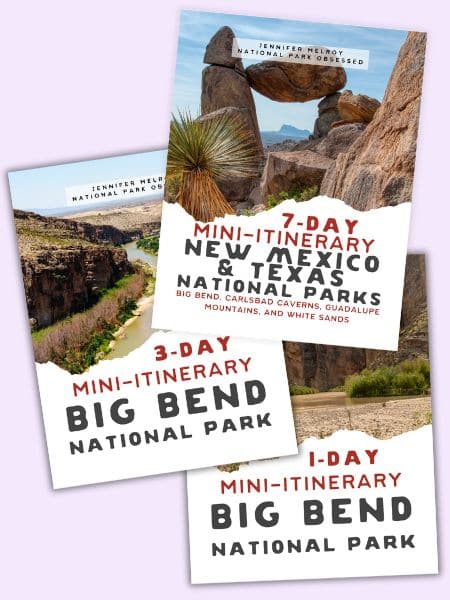
Does Big Bend Trip Planning Leave You Feeling Overwhelmed?
Jump right into booking your Big Bend National Park trip with our expertly designed, pre-made, downloadable National Park itineraries.
Is Big Bend National Park Safe?
There is no straightforward answer to the question, “Is Big Bend National Park Safe?” Big Bend is a remote desert park along an international border with a few issues. There are a lot of potential hazards: slips and falls, flash flooding in the canyons, extreme heat, wildlife, plants, highways, and more.
That said those potential hazards are just that potential hazards. Yes, something bad could happen to you in Big Bend. Occasionally, visitors do experience issues. But if you stay within your skill set and are properly prepared for your adventure, your odds of something serious happening are minimal.
Big Bend National Park gets approximately 400,000 visitors annually. According to Big Bend’s most recent Search & Rescue (SAR) Statistics and Trends report, there are an average of 40 SAR incidents annually. That’s roughly 1 SAR incident per 1,000 visitors. A SAR incident is defined as any event where SAR is called in to assist.
- About half of all Big Bend SAR incidents result in no medical care or minimal medical care, such as providing water and taking vitals.
- About 70% of SAR subjects hike out on their own power, possibly with assistance from responders, including crutches or support to stand and walk.
- National Park Service lists errors in judgment, fatigue/physical condition, and insufficient preparation as the primary contributing factors in SAR incidents.
- Basically, visitors most likely to become SAR subjects are ones who misjudged either the conditions or their abilities, were too tired to continue on their own, and did not adequately prepare for their activity (by failing to bring enough water, proper clothing, a map, etc.).
- About 6% of SAR incidents result in a fatality. This is roughly 1 in every 16,600 visitors.
- 25% of deaths are the result of hyperthermia. Hyperthermia is a dangerously overheated body, usually in response to prolonged, hot, humid weather.
- 25% of deaths are the result of medical issues. Some of these medical issues include cardiac events, diabetes, or asthmatic emergency. It is possible that these issues are exacerbated by their activities and conditions within the park.
Overall, this report reinforces that as long as you stay within your skill set and are properly prepared for your adventure, your odds of something serious happening are minimal.
Big Bend National Park Safety at the Border
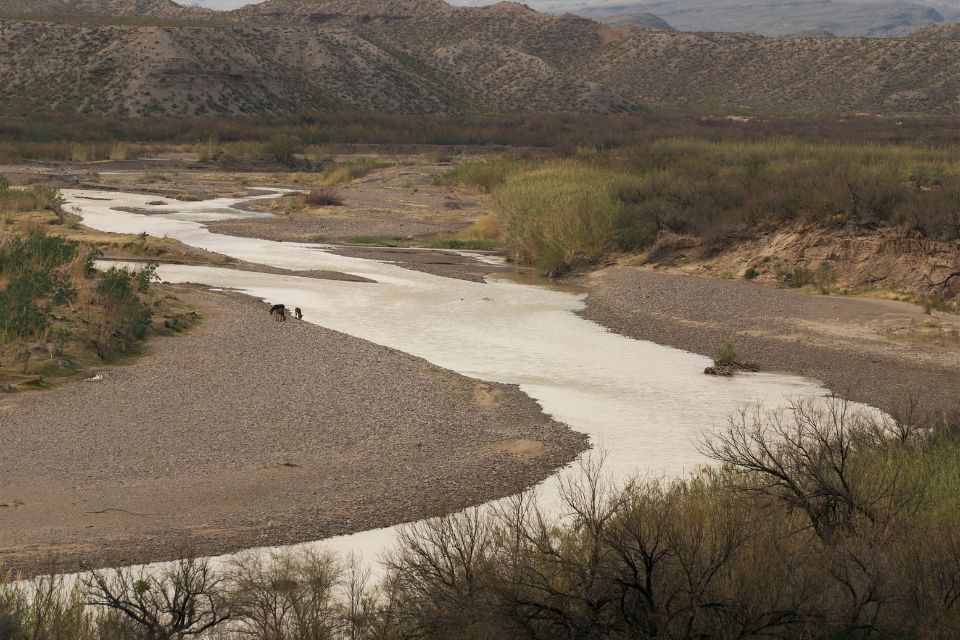
I’m guessing border safety is why you are researching safety in Big Bend National Park. It is a valid concern given that if you spend any time reading the United States news, you will find an article or four related to issues at the US/Mexico Border. These issues range from people making unauthorized entry into the United States to human trafficking to drug smuggling.
So it’s only natural to wonder if these issues occur in a National Park containing 118 miles of the United States and Mexico Border. I’m going to cut to the chase here.
Yes, these issues are all occurring along the US/Mexico border and while it is something you should be aware of when visiting Big Bend National Park. It isn’t something you should be extremely concerned about. Let me explain why.
Below is a map of the US/Mexico border region. First, you should notice that from this scale, Big Bend National Park sits in a giant hole of blank space on both sides of the border. There are no cities and only one road marked on the map leading to the park. If you look at the map insert, you’ll find a range of little hamlets or villages that top out at a couple hundred people.
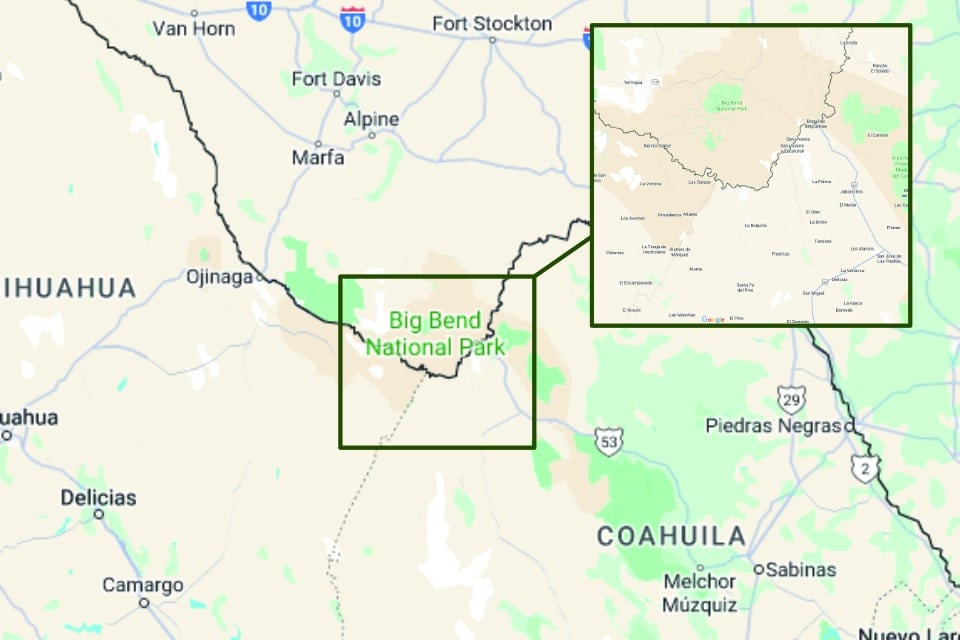
That road you see is Mexican Federal Highway 53. It is a small two-lane highway that is unpaved for the last 20 miles into Boquillas del Carmen. There is almost nothing along this highway until you get to Melchor Múzquiz. Múzquiz is 150 miles and 4.5 hours of driving from Boquillas.
This makes Big Bend a remote park in an unpopulated area on both sides of the border. Being remote and unpopulated makes it less than ideal to smuggle drugs and humans across the border. Yes, there is no one, but because there is no one, it is easy to spot when human activity increases in the area. It also means that border patrol has lots of time and space to catch people should anyone try to cross the border illegally. It’s not like crossing into a more populated area where one can disappear into a mid-sized city.
Most illegal crossings are Mexicans refilling their market stalls (please don’t buy things from these stalls) or collecting their goats or Americans on rafting trips (My float trip company stopped in Mexico, and we took a short hike).
While you should stay vigilant, it’s not a major concern. If you see something suspicious, walk away and notify NPS and Border Patrol. Border Patrol maintains a solid presence in the area; you will likely see them driving around the park and in the nearby towns.
While in Big Bend, I spoke to one of the rangers, and he said that the worst that happens is the local teenage idiots will “break in” to unlocked cars. So, don’t leave your vehicle unlocked or valuables visible in your vehicle so the teenage idiots are less tempted to commit petty crimes.
What Are the Dangers at Big Bend National Park?
Big Bend has a range of hazards that visitors must be aware of when visiting. The key to staying safe in Big Bend National Park is to be aware of the hazards and equipped to handle them, both in outdoor skills and equipment. So, let’s talk about the biggest safety hazards in Big Bend National Park.
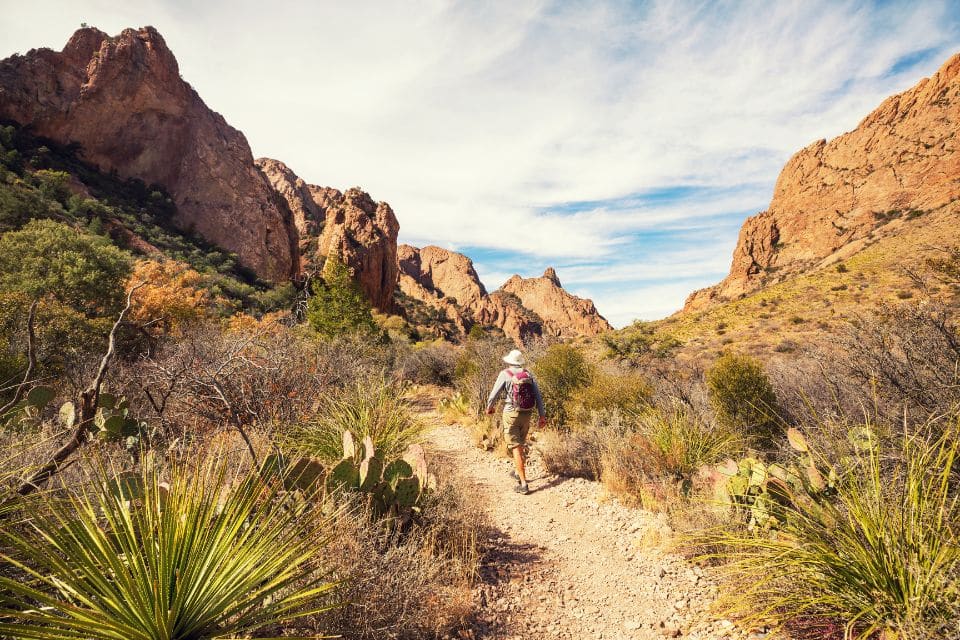
Heat
Big Bend is located within the Chihuahuan Desert, so heat is a HUGE concern. You need to be prepared for the heat and lack of shade when hiking, particularly during the summer. You should be prepared for elevated temperatures and sun exposure even during spring and fall.
Try to limit your physical activities during the heat of the day. Shade is a precious resource, and you aren’t likely to find many places to sit in the shade while hiking.
The 3 BIGGEST things to watch out for when hiking in the desert is dehydration, which can easily lead to heat exhaustion, which can progress to heat stroke. Always carry more water than you think you need, and be aware of the progressing signs of heat-related illness. Heat-related illness, also known as hyperthermia, is one of the leading causes of death in Big Bend National Park.
The following information on dehydration, heat exhaustion, and heat stroke is for educational purposes only and is not a substitute for professional medical advice. I am not a medical professional. I am simply covering the basics of these illnesses so you know to be aware of their potential and will stay safe in Big Bend.
If you start experiencing symptoms of dehydration, you should turn around and head back to the trailhead while taking small but regular sips of water or electrolyte solution. If you display signs of heat exhaustion or heat stroke, please call 911 if you have cell service or use the emergency function on your PLB. Then find as much shade as possible to sit in and remove any excess clothing, take small sips of water, if you have the water to spare wet a bandana and put in on your head, neck, armpits or goin.
Please be aware that drinking too much water is possible, so don’t down water like it is no tomorrow. There is a balance between too much water and not enough, and if you still need to pee but experience nausea, vomiting, or headaches, you might be overdoing the water.
Signs and Symptoms of Dehydration
- Early Signs
- Thirst
- Low Energy
- Feeling Grumpy
- Dry Mouth
- Severe Signs
- Headache
- Nausea
- Change in Personality/Attitude
- Stumbling
- Mumbling
- Muscle Cramps
Signs and Symptoms of Heat Exhaustion
- Cool, Moist Skin with Goosebumps while in the Heat
- Heavy Sweating
- Faintness
- Dizziness
- Fatigue
- Weak, Rapid Pulse
- Low Blood Pressure upon Standing
- Muscle Cramps
Signs and Symptoms of Heat Stroke
- Headache
- Dizziness and Confusion
- Loss of Appetite and Feeling Sick
- Excessive Sweeting and Pale, Clammy Skin
- Muscle Cramps
- Fast Breathing or Pluse
- Being Very Thirsty
Weather
Like all parks, you should always be aware of the weather when exploring the Big Bend National Park. Storms can roll into the area quickly and can bring hazards like wind, precipitation, and lighting. Return to the trailhead and your vehicle if you see a storm rolling in.
If you are unable to reach your vehicle, you should evaluate where you are. It doesn’t take a lot of water for the desert to experience flooding (I’ll discuss this more in the next section) and you should avoid obvious runoff areas, but you do want to be in a depression or lower elevation areas in lighting. If you are carrying any metal objects such as hiking poles, set them down and move at least 100 ft away from them.
If hiking in a group, spread out so that group members are at least 100 ft away from each other and then crouch down on the ground with your weight on the balls of your feet together, your head lowered, and ears covered. Do NOT lie flat on the ground.
Water
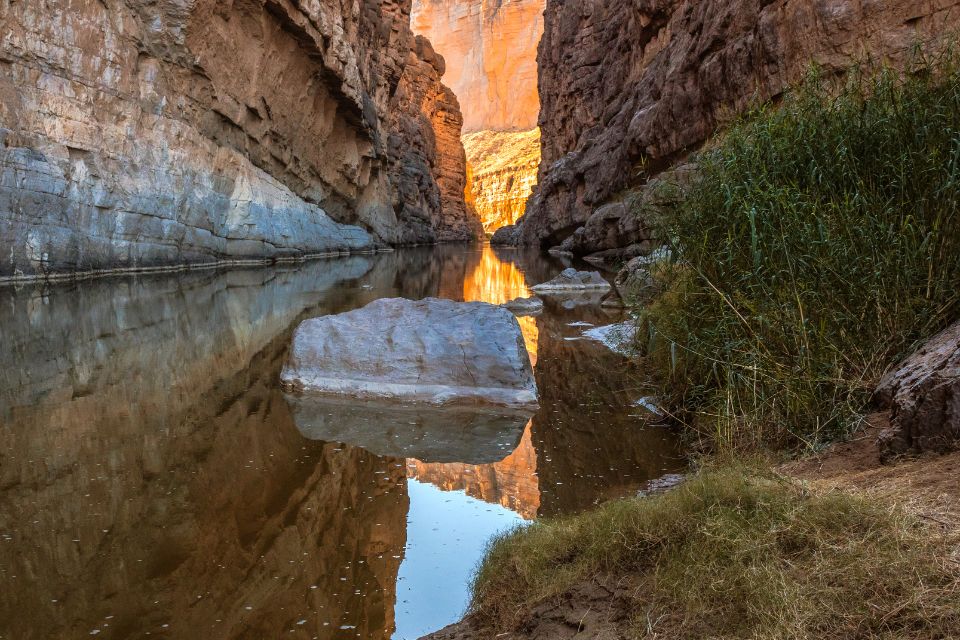
Swimming
Being a desert park, it is tempting to want to go swimming in the Rio Grande. This muddy river can be hazardous to swim in, even when the water is calm. Swimming isn’t recommended. If you choose to swim in the river, you do so at your own risk. Please wear a life jacket and avoid alcohol.
Strong undercurrents, deep holes, and shallow areas with sharp rocks and large tree limbs can exist. Water testing has shown the presence of water-borne micro-organisms and other waste materials that can cause serious illness.
Flash Flooding
A little water goes a long way in the desert. Flash flooding can and does occur within the park, and many times, the storm that causes the flooding is miles upstream from the park. If you notice the water start to change color, see an increase of debris in the water, or head something resembling a freight train toward you, seek higher ground immediately. This is particularly true when hiking the canyon trails.
Fall Hazards
Steep drop-offs are a major fall hazard when hiking in the mountains or near canyons. Keep back from all ledges and stay behind all railings.
Wildlife
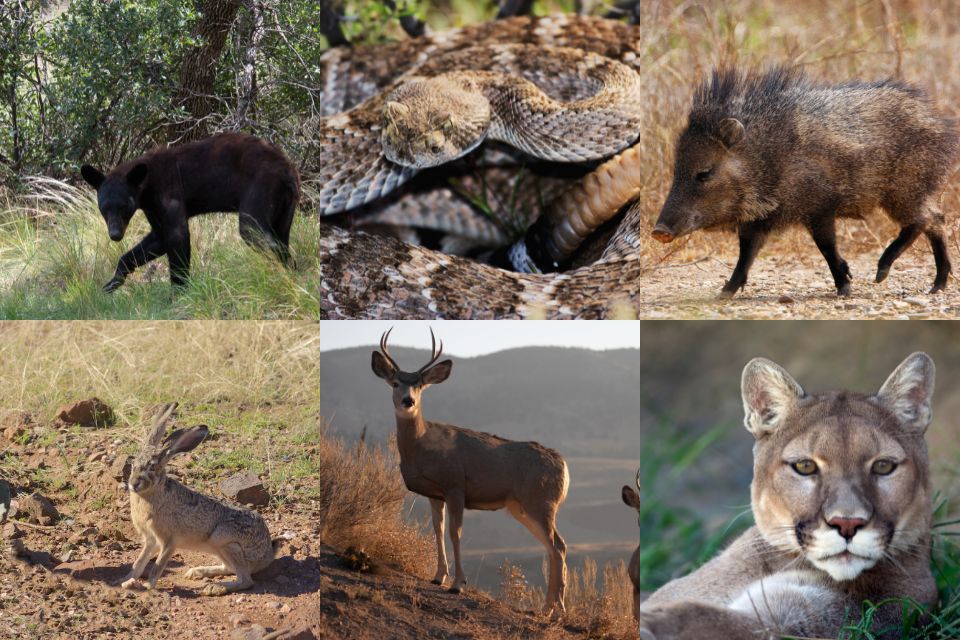
If you look at the wildlife in the image above, which ones appear the most dangerous animals to you on your visit to Big Bend National Park? Your mind probably jumps to the Black Bear, mountain lion, and snakes as the animals most likely to be dangerous to you.
While there is some risk of a negative wildlife encounter with these three wildlife, you are much more likely to have a negative wildlife encounter with a deer or javelina. Admittedly, this encounter will probably occur when you have hit them with your vehicle. Hitting any of Big Bend’s large wildlife with your vehicle is fatal to the animal and dangerous for you.
The speed limit in the park is a maximum of 45 miles per hour. The speed limit in Big Bend is for your safety as well as the safety of the wildlife. If you are within the speed limit, you are much more likely to have time to safely stop before you hit anything.
Standard Big Bend Wildlife Saftey
There are a few basic safety rules that apply to all animals within Big Bend National Park.
- All animals in the park are wild.
- Do NOT approach wildlife.
- Do not feed wildlife.
- Store all food, coolers, cooking utensils, and toiletries in a hard-sided vehicle or food locker.
- Throw all garbage in the bear-proof dumpsters and trash cans.
- Keep kids close. Do NOT let them run ahead or lag behind.
Black Bears and Mountain Lions
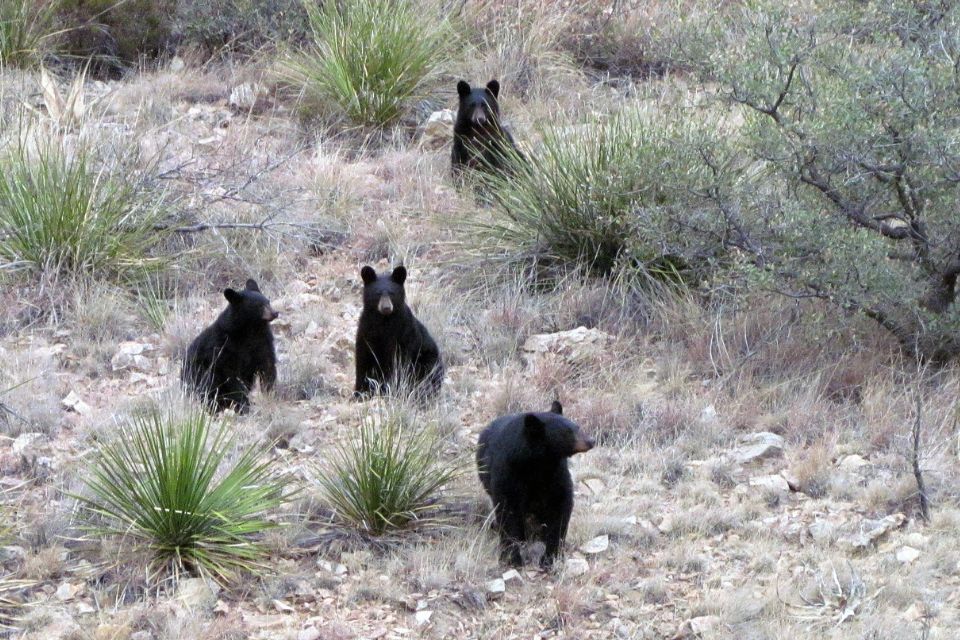
Black Bears and Mountains Lions are both found within Big Bend. As a general rule, neither is a threat to humans, but it is always possible to have a negative encounter.
The number one rule is to keep your distance. Never approach wildlife, especially black bears and mountain lions. Maintain at least 50 yards at all times. If not possible, give them as much space as you can. If the animal changes its behavior, you ARE TOO CLOSE, so you need to back up.
If the animal approaches, slowly back away while talking loudly. Pick up any small children and have all group members move closer together. If the animal displays aggressive behavior and is following you, stand your ground and throw rocks or sticks at it.
If attacked, fight back. Do NOT play dead.
Javelinas
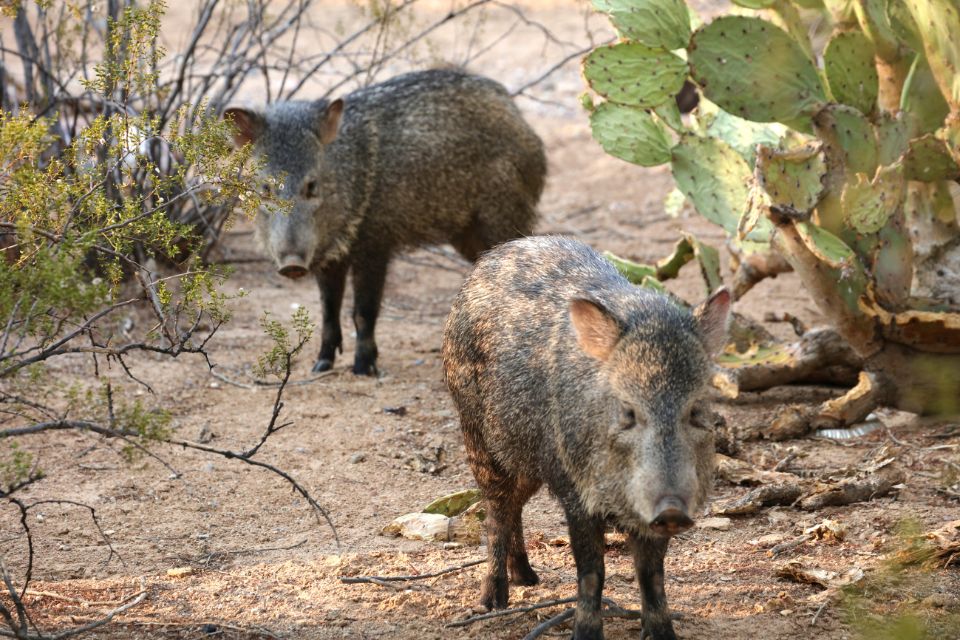
If you asked me what animal I am most scared of in Big Bend. It is the javelinas. I’m probably biased due to a wild hog incident during high school. These cute pig-like creatures are not to be messed with, and an angry javelina can be very dangerous to humans and dogs. They have mauled dogs to death within the park.
Snakes
Big Bend National Park is home to 31 species of snakes. Most are harmless to humans, but there are five species that are venomous. The venomous snakes of Big Bend are:
- Mottled Rock Rattlesnake
- Black-tailed Rattlesnake
- Western Diamondback Rattlesnake – Most common
- Trans-Pecos Copperhead
- Mojave Rattlesnake
The most commonly seen snake within the park is the red racer (also called western coachwhip). This bright reddish-pink color snake is harmless to humans.
All snakes are protected within Big Bend. If you see a snake, keep your distance and leave them alone. They are most active during warmer months. You should inspect shoes, sleeping bags, and bedding before use. Pay attention to where you walk and place your hands. Wear high boots or protective leggings when hiking.
Plants
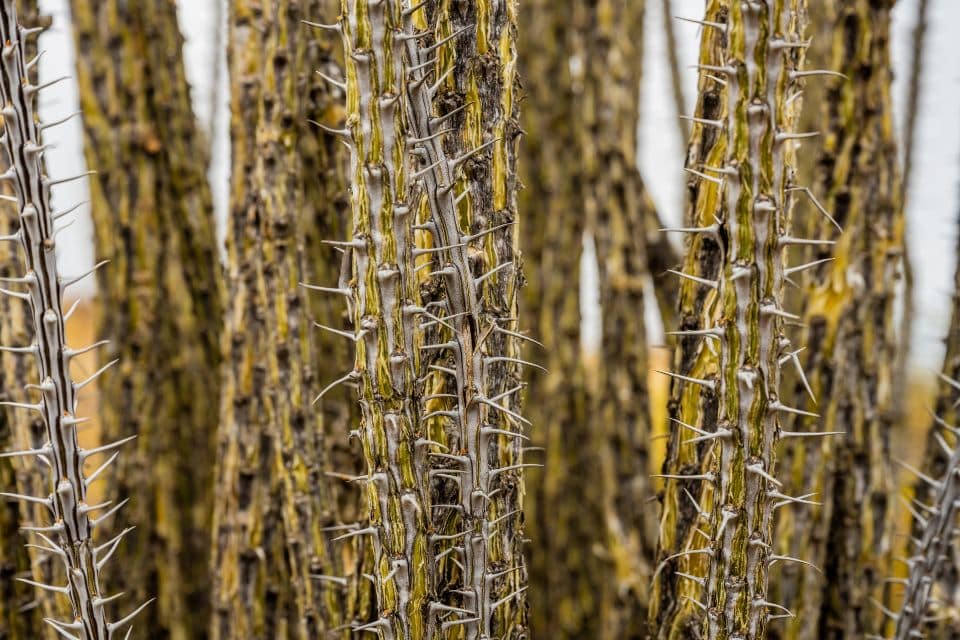
Big Bend Natioanl Park is home to over 1,300 species of plants. Most are harmless to humans unless eaten or touched. Like many deserts, Big Bend has a range of cacti.
Cacti and ocotillo have an innate ability to magically appear about shin high and catch unsuspecting hikers. The best way to prevent being scratched or hurt is to wear long sleeves and long pants.
Boquillas Del Carmen Mexico Safety
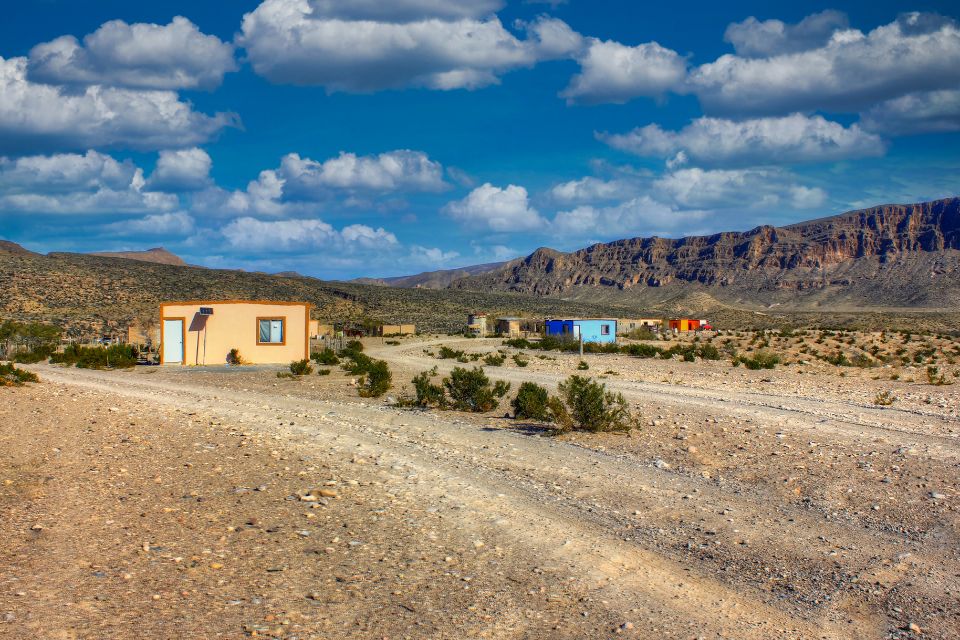
Boquillas Del Carmen is probably one of the safest border towns along the United States/Mexico border. Boquillas is a tiny, isolated village that is several hours away from anything resembling a major city. Boquillas’ main source of income is tourism from Big Bend National Park.
The town needs Boquillas border crossing to stay open. The town nearly died when the border crossing closed during the post-9/11 security crackdown for 12 years. Boquillas is still recovering. So, Boquillas is highly invested in keeping tourists safe and happy and the border crossing open.
Final Thoughts on Big Bend Safety
We hope this article has empowered you to feel safe during your Big Bend National Park trip. Connect with other National Park lovers in the best National Park Facebook group.
Pin for Later: Big Bend National Park Safety

Jennifer Melroy
Hi, I'm Jennifer!
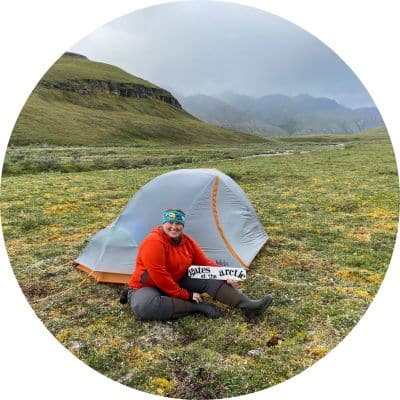
Welcome to the wonderful world of National Parks. I'm here to help you plan your NEXT amazing adventure through the United States National Parks and beyond. I want the national parks to be accessible to all.
I live in Tennessee, and when I'm home, you can find me hiking in the Smokies and the Cumberland Plateau.
58/63 National Parks
250+/423 National Park Units
Want to know more? Start Here.
ACKNOWLEDGEMENT OF LAND
On this site, we promote travel to the United States and beyond that are the traditional lands of Indigenous and First Nations peoples.
With respect, I make a formal land acknowledgment, extending my appreciation and respect to these lands’ past and present people.
To learn more about the people who call these lands home, I invite you to explore Native Land.
DISCLAIMER
National Park Obsessed assumes no responsibility or liability for any errors or omissions in the content of this site (NationalParkObsessed.com). The information contained in this site is provided with no guarantees of completeness, accuracy, usefulness or timeliness. You are encouraged to conduct your own due diligence before acting on the information provided on this site and should not rely on the opinions expressed here.
There is an inherent risk in all outdoor recreation activities, the reader assumes all responsibility for their own personal safety.
DISCLOSURE
We are a participant in the Amazon Services LLC Associates Program, an affiliate program designed to provide a means for us to earn fees by linking to Amazon.com and affiliated sites.
Privacy Policy • About Us • Contact
Select stock photography provided depositphotos
Copyright ©2023 National Park Obsessed, LLC
